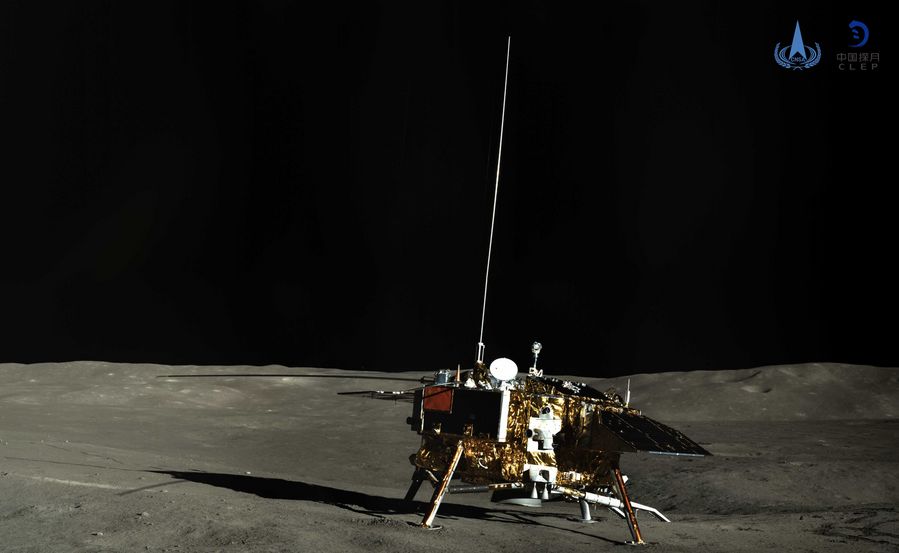
Photo taken by the rover Yutu-2 (Jade Rabbit-2) on Jan. 11, 2019 shows the lander of the Chang'e-4 probe. (Xinhua/China National Space Administration)
The lander and rover of the Chang'e-4 probe woke up to resume work.
BEIJING, Nov. 22 (Xinhua) -- The lander and rover of the Chang'e-4 probe have resumed work for the 12th lunar day on the far side of the moon after "sleeping" during the extremely cold night.
The lander woke up at 5:03 p.m. Thursday (Beijing Time), and the rover, Yutu-2 (Jade Rabbit-2), awoke at 0:51 a.m. the same day. Both are in normal working order, according to the Lunar Exploration and Space Program Center of the China National Space Administration.
The rover has traveled about 319 meters on the moon to conduct scientific exploration of the virgin territory.
The Chang'e-4 probe, launched on Dec. 8, 2018, made the first-ever soft landing on the Von Karman Crater in the South Pole-Aitken Basin on the far side of the moon on Jan. 3, 2019.
A lunar day equals 14 days on Earth, and a lunar night is the same length. The Chang'e-4 probe switched to dormant mode during the lunar night due to the lack of solar power.

Panoramic photo shows the lander of the Chang'e-4 probe, Feb. 13, 2019. The lander and the rover of the Chang'e-4 probe have been switched to dormant mode for the lunar night, the China National Space Administration (CNSA) announced Wednesday (Xinhua/China National Space Administration)
As a result of the tidal locking effect, the moon's revolution cycle is the same as its rotation cycle, and the same side always faces Earth.
The far side of the moon has unique features, and scientists expect Chang'e-4 could bring breakthrough findings.
The scientific tasks of the Chang'e-4 mission include conducting low-frequency radio astronomical observation, surveying the terrain and landforms, detecting the mineral composition and shallow lunar surface structure and measuring neutron radiation and neutral atoms.
The Chang'e-4 mission embodies China's hope to combine wisdom in space exploration with four payloads developed by the Netherlands, Germany, Sweden and Saudi Arabia. ■



